-
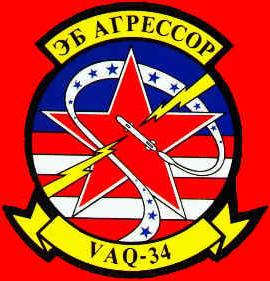
|
-
- Fleet Electronic Warfare Support Group Aircraft and Assets
|
-
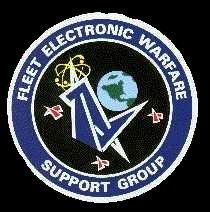 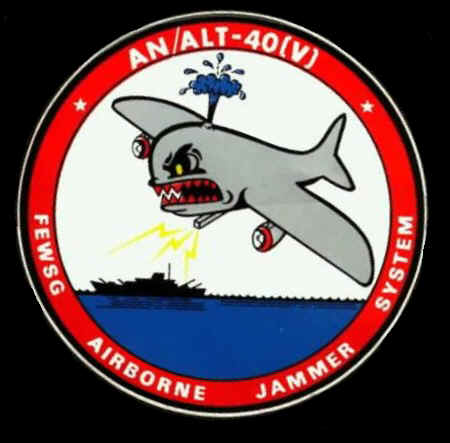 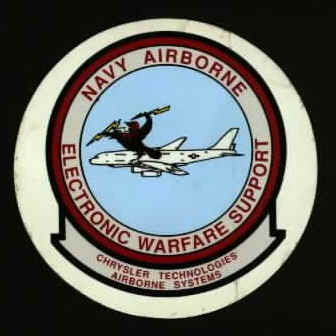 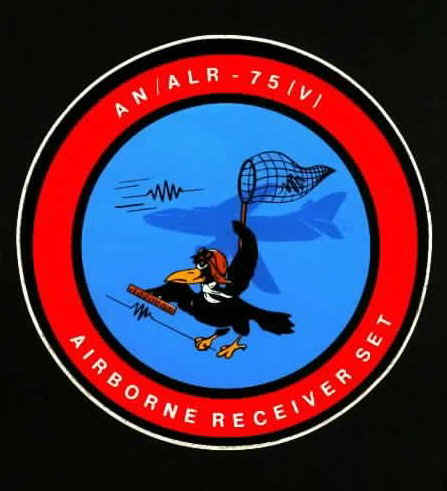
|
-
- FEWGS Contractor Supported Aircraft
-
- McDonnell Douglas Tulsa, OK
- Electrospace Systems, Inc Waco, TX
- Chrysler Technologies Airborne Systems Waco, TX
- Raytheon Waco, TX
|
-
- Boeing NKC-135A
|
-
- BUNO 553134
- KNC-135A
- NUCAR-1
- Boeing C/N 17250
- USAF Serial Number 55-3134
- Originaly manufactured by Boeing as a KC-135A-BN Stratotanker it was modified as a
JKC-135A, a USAF testbed aircraft.
- It was them modified as an NKC-135A and was bailed to the US Navy for use as
Electronic Warfare Training Aircraft.
- It retained the USAF Serial Number as the Navy BUNO.
- 553134 was placed in storage at Davis-Monthan on Feb 20 1996.
-
- US Navy Photo
-
- US Navy Photo
-
- Photo by Frank J. Mirande
-
- On takeoff, displaying multitude of antennas and pods that bespoke its mission:
- Training Navy airborne and shipborne crews to operate in a (maddeningly) realistic
electronic warfare environment.
- Good view of the wing mounted Pods
- Marietta - Dobbins ARB (Atlanta NAS) GA, 18 Feb 1994
|
-
- BUNO 563596
- NKC-135A
- NUCAR-2
- Boeing C/N 17345
- Air Force Serial Number 56-3596
- Originaly manufactured by Boeing as a KC-135A-BN Stratotanker it was modified as a
JKC-135A, a USAF testbed aircraft.
- It was them modified as an NKC-135A and was bailed to the US Navy for use as
Electronic Warfare Training Aircraft.
- It retained the USAF Serial Number as the Navy BUNO.
- 553134 was placed in storage at Davis-Monthan on Feb 20 1996.
- 563596 was placed in storage at Davis-Monthan on Feb 20 1996.
-
- Photo by Del Laughery
-
- Photos by Steven Miller, used with permission
-
-
|
-
- McDonnell Douglas EC-24A
|
-
- BUNO: 163050
- Douglas C/N: 45881
- Douglas Line Number: 276
- EC-24A
- NUCAR-3
- The EC-24A is a DC-8-54F modified for Fleet Electronic Warfare Support Missions.
- EX-N8048U, it was delivered to United Airlines and was operated from 1966 to 1984 when
it was sold to the US Navy.
-
- USAF Photos from Davis-Monthan
-
- Photo from the GETA-O website
-
|
-
- FEWSG Contract Aircraft
- (non-military)
-
- L-3 FLIGHT INTERNATIONAL Learjet 35
-
- L-3 Flight International aircraft are
equipped with internal and external EW equipment providing threat simulation;
- active and passive jamming systems covering VHF/UHF, B, D,
E/F, G, H, I and low J Bands; and chaff.
-
|
-
- Some of the electronic equipment the FEWSG Aircraft used.
-
- AN/ALT-40(V) AIRCRAFT Airborne Jammer Simulator
-
- AN/ALR-75 (V) Electronic Support Measures Surveillance
Receiver System
-
- AN/DLQ-3 Electronic Countermeasures Jammer
-
- AN/AST-4 Radar Threat Simulator
-
- AN/ALE-43 Chaff
Cutter/Dispenser Unit
-
- AN/ALQ-170 Airborne Missile Simulator
-
-
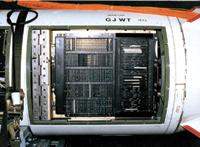 - The processing electronics of the Navy ALQ-170 Missile Simulator
|
-
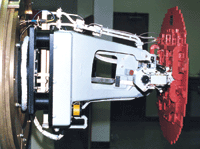 - The RADAR antenna and gimbal of the ALQ-170. The control electronics are in the gimbal
base.
|
-
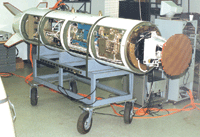 - Full view of the ALQ-170
- Missile Simulator.
|
-
|
-
-
- EW Transitions into the New World Order
- 1993
A sign of the times is the increasing inclination of Congress (in particular) and DOD
officials to
transfer mission responsibilities from the active military services to reserve components.
An example is provided by the Navy's recent transfer of EW training mission
responsibilities to the Navy reserves.
- Among organizations affected by this change is Navy's Fleet Training Readiness Group,
which
includes elements of what was called the Fleet EW Support Group (FEWSG).
Three active duty squadrons - VAQ-33, NAS Key West, FL; VAQ-34, NAS Lemoore, CA; and
VAQ-35, NAS Whidbey Island, WA - will be decommissioned October 1 as a result of the
move. The EA-6B aircraft from VAQ-35 will dispersed to VAQ-209, Andrews AFB, MD, and
VAQ-309 at Whidbey Island, while a VAQ-33 EP-3J will fly to VP-94, NAS New Orleans. VAQ-33
EA-6A and VAQ-34 F/A-18 aircraft also will be dispersed to stations around the country.
The aircraft will carry the same EW equipment and
training systems assigned to them before the transfer.
CAPT Dennis Fandrei, program manager of Naval Air Systems Command's Reconnaissance and EW
Systems Program Office (PMA-253), told Washington Report that program management for EW
training efforts will remain the responsibility of PMA-253.
|
-
- NAVY: HERE AND THERE
- 1993
As far as surface ship training is concerned, the Navy prefers a more distributed approach
in which the training assets are brought to the crews, as opposed to the other way around.
Perhaps the best known EW training asset is the Fleet EW Support Group (FEWSG), which was
melded with the Fleet Deception Group Atlantic in May 1992 to form the Fleet Tactical
Readiness Group (FTRG). The FTRG possesses a fleet of airborne simulators that create a
realistic threat environment against which SLQ-32 and other EW operators can hone their
skills (see Table 1 for a listing of equipment and aircraft).
The FTRG has undergone a significant amount of reorganization within the last year.
Stewardship has moved from the recently disbanded NAVAIR PMA-253 to PMA-272. The three VAQ
squadrons assigned the FTRG role also were disbanded last October, with the reserves now
tapped to fill their shoes. However, the two NKC-135As and the EC-24A aircraft operated
for FTRG by Chrysler Technologies Airborne Systems (CTAS) have remained relatively
unaffected by these changes. CTAS both maintains the aircraft and provides the aircrews,
according to a company source. As highlighted in the table, the aircraft have been
tailored for the FTRG mission; the NKC-135s can carry TREE jammer pods on their wing
pylons, as well as flying ALQ-167, USQ-113(V)1 and ALT-40 jammers and
AST-6 threat simulators. The aircraft was being fit checked for the ALQ-170 pods as this
issue went to press.
The FTRG has proven a multipurpose capability, said the source. In addition to training US
Navy crews, joint training exercises have brought benefits to allied and friendly nations
in Europe and South America. While the nature of the training missions changes with the
perceived changes in potential threats, the requirement for such an asset remains, said
the source. Thus, while CTAS currently is in the last of five option years, the source
expressed confidence that a follow-on contract will be fully funded. The fact that the
FTRG also has proven useful in test and evaluation applications adds to its utility and to
its future security as a viable program.
|
-
|